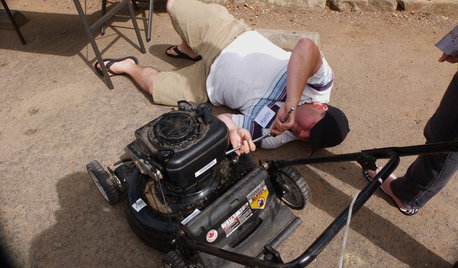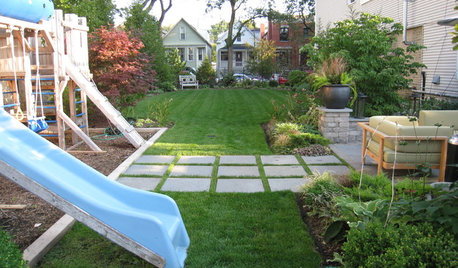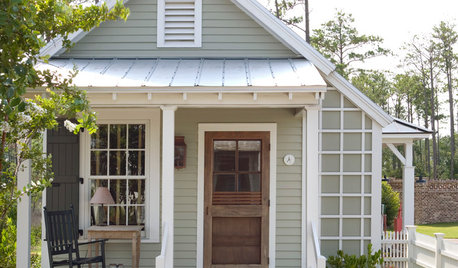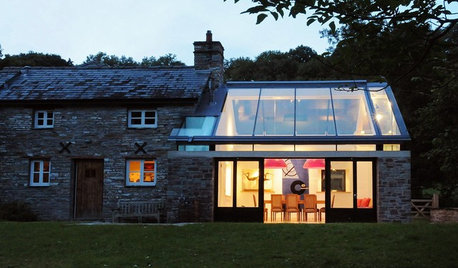How to replant a dangerous stream bank?
restorephoto
11 years ago
Related Stories

GARDENING GUIDESGreat Design Plant: Anemone Canadensis Adds Pizzazz to Water’s Edges
Plant Canadian anemone along pond, lake or stream edges for a splash of white flowers in late spring
Full Story
EVENTSDon't Throw Away Another Household Item Before Reading This
Repair Cafe events around the world enlist savvy volunteers to fix broken lamps, bicycles, electronics, small appliances, clothing and more
Full Story
BATHROOM DESIGNThe Elegant Look of Draperies in the Bathroom
Drapes add privacy and soften a room full of hard surfaces. See how they can be styled for baths
Full Story
LIFE6 Tips for Teaching Your Kids to Be Good Neighbors
Everyone wins when your children learn to respect boundaries, get help when they need it and show others they care
Full Story
LIGHTINGHouse Hunting? Look Carefully at the Light
Consider windows, skylights and the sun in any potential home, lest you end up facing down the dark
Full Story
MOVINGHow to Avoid Paying Too Much for a House
Use the power of comps to gauge a home’s affordability and submit the right bid
Full Story
BUDGETING YOUR PROJECTDesign Workshop: Is a Phased Construction Project Right for You?
Breaking up your remodel or custom home project has benefits and disadvantages. See if it’s right for you
Full Story
GREEN BUILDINGJust Add Water: Rain Barrel Magic
Take your rainwater storage from practical to beautiful with a new breed of design-friendly rain barrels
Full Story
GRASSES10 Ways to Use Ornamental Grasses in the Landscape
These low-maintenance plants can add beauty, texture and privacy to any size garden
Full Story
LIFEThe Wisdom of Kenny Rogers, for Declutterers
No need to gamble on paring-down strategies when the country music legend has already dealt out some winning advice
Full StoryMore Discussions







tsugajunkie z5 SE WI ♱
ken_adrian Adrian MI cold Z5
Related Professionals
Glassmanor Landscape Architects & Landscape Designers · La Marque Landscape Architects & Landscape Designers · Milwaukee Landscape Architects & Landscape Designers · Oconomowoc Landscape Architects & Landscape Designers · Flagstaff Landscape Contractors · New Baltimore Landscape Contractors · New Providence Landscape Contractors · Tacoma Landscape Contractors · Conyers Window Contractors · Lakewood Window Contractors · Elk Grove Village Driveway Installation & Maintenance · Reston Driveway Installation & Maintenance · Fort Myers Driveway Installation & Maintenance · Palmetto Decks, Patios & Outdoor Enclosures · Philadelphia Decks, Patios & Outdoor EnclosuresTiffany, purpleinopp Z8b Opp, AL
ken_adrian Adrian MI cold Z5
Tiffany, purpleinopp Z8b Opp, AL
restorephotoOriginal Author
strobiculate
ken_adrian Adrian MI cold Z5
ken_adrian Adrian MI cold Z5
restorephotoOriginal Author
User
cyn427 (z. 7, N. VA)
restorephotoOriginal Author
restorephotoOriginal Author
jimbobfeeny
whaas_5a
restorephotoOriginal Author
restorephotoOriginal Author